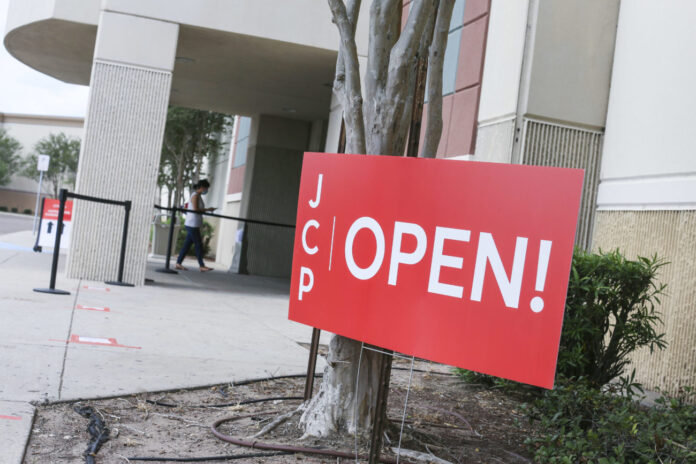HARLINGEN —Retail figures from April show the business pain of the COVID-19 shutdowns was not spread evenly, but varied depending on the type of business and whether or not it had an online platform for sales.
The National Retail Federation, the world’s largest retail trade association, analyzed U.S. Census Bureau numbers and found they were poor, dropping twice as much in April as they did in March.
Overall retail sales for April were down 16.4 percent, the census bureau said. That follows a record-setting 8.3 percent month-over-month drop in March.
“ As predicted, retail sales were bad in April and lower than in March,” NRF Chief Economist Jack Kleinhenz said. “…Now that we’re in mid-May, many businesses are already starting to reopen. Relief payments and pent-up demand should provide some degree of post-shutdown rebound, but spending will be far from normal and may be choppy going forward.”
NRF’s own calculation of retail sales – which excludes automobile dealers, gas stations and restaurants in order to focus on core retail – showed April was down 14.1 percent seasonally adjusted from March and down 8.7 percent unadjusted year-over-year.
The NRF numbers show less of a decline than the Census Bureau because the categories excluded were among those most affected as fewer people were driving and most restaurants were either closed or selling take-out or drive-thru only, the retail federation said.
These national numbers track fairly closely to what local analysis has found as well, said Raudel Garza, chief executive officer of the Harlingen Economic Development Corp.
“ What I can tell you is that the retail coach we hired to help us with some retail recruitment, they did some consulting work for us, too,” Garza said. “They’ve been telling us about some of the patterns they’ve been seeing, and actually we were able to pull some cell phone data before March 15 and after March 15 to basically show us how the traffic patterns at different shopping centers have changed throughout our community, and they really do track with what NRF is talking about.”
Garza said the actual March figures are probably worse, since quarterly tax filers were included with their February and January numbers as well.
“ April and May are going to be a big difference,” he added. “I’m expecting a big difference …
there are people who are hurting now, and they’re going to continue to hurt for a while.”
Every category of retail except online was down nationally on a monthly basis in April, including grocery stores and others that had seen a surge in March as consumers stocked up. Online, grocery stores and building materials were the only categories that saw a year-over-year gain, indicating value for a business investing in an online sales platform.
Online and other non-store sales were up 21.2 percent unadjusted year-over-year and up 8.4 percent month-over-month seasonally adjusted, the NRF said.
Garza’s agency has just launched the Harlingen Economic Loan Program (HELP), an interest-free loan program of up to $10,000 each for local small businesses that qualify. Nine loans were awarded this week.
His agency also is working on ways to ease the transition to better marketing and online sales platforms for local businesses.
“ I think that a lot of them are going to have to adapt to that new platform,” Garza said. “Some of them have done it, and done it very well, and some are going to need a lot of help.
“ That’s part of what we’re looking at in trying to help these businesses,” he added. “Not only are we coaching them on some of the different federal resources that are out there in terms of monetary assistance, but we’re also trying to get them to look at how the y do their marketing and try to improve on that.”
The new re-opening rules for many of the businesses that have been shut down are not simple to navigate. For example, some will be limited to opening just a portion of their previous space, with a commensurate drop in both the number of customers and revenue likely.
And that’s a problem, Garza says.
“ We’re still in the middle of the storm, so it’s kind of hard to figure out for some of these guys exactly whether a 25-percent opening or a 50-percent opening is going to make sense for them,” he said. “For some people, the fixed costs associated with opening are still greater than the revenues that they’re going to generate. In some instances, some of them are still in a better position by not opening until they’re ready to do it at 100 percent.”
Nationally, retail off in April
• General merchandise stores were down 13.8 percent unadjusted year-over-year and down 20.8 percent month-over-month seasonally adjusted.
• Food and beverage stores were up 13.3 percent, but down 13.1 percent month-over-month when seasonally adjusted.
• Building materials and garden supply stores were up 1.2 percent unadjusted year-over-year but down 3.5 percent month-over-month seasonally adjusted.
• Sporting goods stores were down 48.7 percent unadjusted year-over-year and down 38 percent monthover-month seasonally adjusted.
• Electronics and appliance stores were down 64.8 percent unadjusted year-over-year and down 60.6 percent month-over-month seasonally adjusted.
• Furniture and home furnishings stores were down 66.3 percent unadjusted year-over-year and down 58.7 percent month-over-month seasonally adjusted.
• Clothing and clothing accessory stores were down 89.3 percent unadjusted year-over-year and down 78.8 percent month-over-month seasonally adjusted.
Source: National Retail Federation




